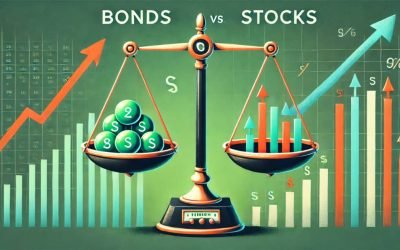Understanding Active and Passive Investing
Investing in the stock market can be a daunting task, especially for those who are new to the world of finance. One of the most fundamental decisions an investor must make is whether to pursue an active or passive investment strategy. Both approaches have their merits and drawbacks, and understanding the differences between them is crucial for making informed investment decisions. This article delves into the intricacies of active and passive investing, providing valuable insights to help you determine which strategy aligns best with your financial goals.
More information: https://www.morganstanley.com/articles/active-vs-passive-investing
What is Active Investing?
Active investing involves a hands-on approach where fund managers or individual investors actively make decisions about buying and selling securities. The primary goal is to outperform a specific benchmark index, such as the FTSE 100 or the S&P 500. Active investors rely on various strategies, including market timing, stock picking, and sector rotation, to achieve higher returns.
Key Characteristics of Active Investing
- Research-Driven: Active investors conduct extensive research and analysis to identify undervalued stocks or market trends.
- Higher Costs: Due to frequent trading and the need for professional management, active investing typically incurs higher fees and expenses.
- Potential for Higher Returns: If successful, active investing can yield returns that outperform the market.
- Flexibility: Active investors can quickly adapt to changing market conditions and take advantage of short-term opportunities.
What is Passive Investing?
Passive investing, on the other hand, involves a more hands-off approach. The goal is to replicate the performance of a specific benchmark index by holding a diversified portfolio of securities that mirror the index. Passive investors believe that it is difficult to consistently outperform the market, so they aim to achieve market returns with minimal effort and lower costs.
Key Characteristics of Passive Investing
- Lower Costs: Passive investing generally involves lower fees and expenses due to less frequent trading and the absence of active management.
- Long-Term Focus: Passive investors typically adopt a buy-and-hold strategy, aiming for steady, long-term growth.
- Market Returns: Passive investing aims to match, rather than beat, the performance of a benchmark index.
- Simplicity: Passive investing is straightforward and requires less time and effort compared to active investing.
Comparing Active and Passive Investing
To better understand the differences between active and passive investing, let’s compare them across several key dimensions:
| Dimension | Active Investing | Passive Investing |
|---|---|---|
| Management Style | Hands-on, frequent trading | Hands-off, buy-and-hold |
| Cost | Higher fees and expenses | Lower fees and expenses |
| Performance Goal | Outperform the market | Match market returns |
| Risk | Higher due to active trading | Lower due to diversification |
| Time Commitment | High | Low |
Advantages and Disadvantages of Active Investing
Advantages
- Potential for Higher Returns: Skilled fund managers can identify opportunities to outperform the market.
- Flexibility: Active investors can quickly respond to market changes and take advantage of short-term trends.
- Customisation: Active strategies can be tailored to specific investment goals and risk tolerances.
Disadvantages
- Higher Costs: Management fees, trading costs, and other expenses can erode returns.
- Inconsistent Performance: Even experienced fund managers may struggle to consistently outperform the market.
- Increased Risk: Active trading can lead to higher volatility and potential losses.
Advantages and Disadvantages of Passive Investing
Advantages
- Lower Costs: Reduced fees and expenses mean more of your money stays invested.
- Consistent Performance: Passive funds aim to match the market, providing steady, predictable returns.
- Lower Risk: Diversification across a broad index reduces the impact of individual stock volatility.
- Simplicity: Passive investing is easy to understand and implement, making it accessible to all investors.
Disadvantages
- Limited Upside: Passive investors are unlikely to achieve returns that significantly outperform the market.
- Lack of Flexibility: Passive strategies cannot quickly adapt to changing market conditions or take advantage of short-term opportunities.
- Market Risk: Passive investors are fully exposed to market downturns and cannot mitigate losses through active management.
Choosing the Right Strategy for You
Deciding between active and passive investing depends on various factors, including your financial goals, risk tolerance, investment horizon, and personal preferences. Here are some considerations to help you make an informed decision:
Financial Goals
If your primary goal is to achieve market-beating returns and you are willing to take on higher risk and costs, active investing may be suitable for you. Conversely, if you seek steady, long-term growth with lower costs and risk, passive investing might be a better fit.
Risk Tolerance
Active investing involves higher risk due to frequent trading and the potential for significant losses. If you have a high risk tolerance and are comfortable with market volatility, active investing could be an option. However, if you prefer a more conservative approach with lower risk, passive investing is likely more appropriate.
Investment Horizon
Your investment horizon, or the length of time you plan to hold your investments, also plays a crucial role in determining the right strategy. Active investing may be more suitable for short- to medium-term horizons, while passive investing is generally better for long-term horizons.
Personal Preferences
Consider your interest and expertise in financial markets. Active investing requires a significant time commitment and a deep understanding of market dynamics. If you enjoy researching stocks and making investment decisions, active investing may be appealing. On the other hand, if you prefer a hands-off approach with minimal effort, passive investing is likely more suitable.
Combining Active and Passive Strategies
Many investors choose to combine active and passive strategies to diversify their portfolios and balance the benefits and drawbacks of each approach. This hybrid strategy can provide a more comprehensive investment solution that aligns with your financial goals and risk tolerance.
Core-Satellite Approach
The core-satellite approach is a popular method for combining active and passive strategies. In this approach, the “core” of the portfolio consists of passive investments, such as index funds or ETFs, which provide broad market exposure and stability. The “satellite” portion includes actively managed investments that aim to enhance returns through targeted stock picking or sector allocation.
Benefits of the Core-Satellite Approach
- Diversification: Combining active and passive investments can reduce risk and enhance portfolio diversification.
- Cost Efficiency: The core portion of the portfolio benefits from lower costs associated with passive investing, while the satellite portion seeks higher returns through active management.
- Flexibility: The core-satellite approach allows investors to take advantage of both long-term market growth and short-term opportunities.

Conclusion
Active and passive investing each have their unique advantages and disadvantages. Active investing offers the potential for higher returns and greater flexibility but comes with higher costs and increased risk. Passive investing provides lower costs, consistent performance, and simplicity but may limit upside potential and flexibility.
Ultimately, the choice between active and passive investing depends on your financial goals, risk tolerance, investment horizon, and personal preferences. By understanding the key differences between these strategies and considering your individual circumstances, you can make an informed decision that aligns with your investment objectives.
For many investors, a combination of active and passive strategies through a core-satellite approach can offer a balanced and diversified investment solution. By leveraging the strengths of both approaches, you can create a portfolio that meets your financial goals while managing risk effectively.
Q&A Section
- Q: What is the main goal of active investing?
A: The main goal of active investing is to outperform a specific benchmark index through hands-on management and strategic decision-making. - Q: How does passive investing aim to achieve returns?
A: Passive investing aims to achieve returns by replicating the performance of a specific benchmark index through a diversified portfolio of securities. - Q: What are the key characteristics of active investing?
A: Key characteristics of active investing include being research-driven, having higher costs, potential for higher returns, and flexibility in adapting to market conditions. - Q: What is the core-satellite approach?
A: The core-satellite approach is a method of combining active and passive strategies, where the core of the portfolio consists of passive investments for stability, and the satellite portion includes actively managed investments for potential higher returns. - Q: What factors should be considered when choosing between active and passive investing?
A: Factors to consider include financial goals, risk tolerance, investment horizon, and personal preferences.















 How to trade CFD? (00:49)
How to trade CFD? (00:49) How to trade binary options*? (01:22)
How to trade binary options*? (01:22) Forex. How to start? (01:01)
Forex. How to start? (01:01)